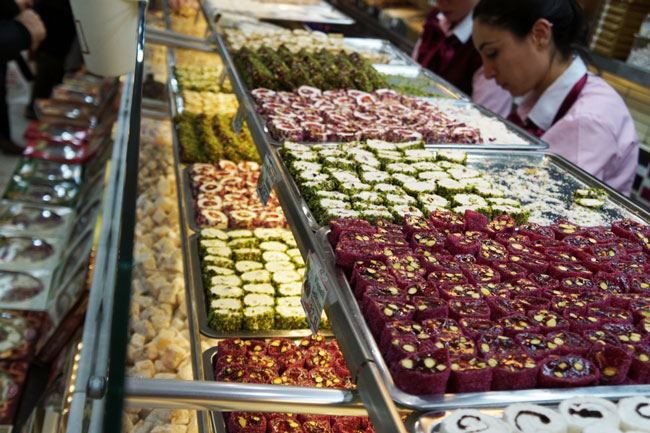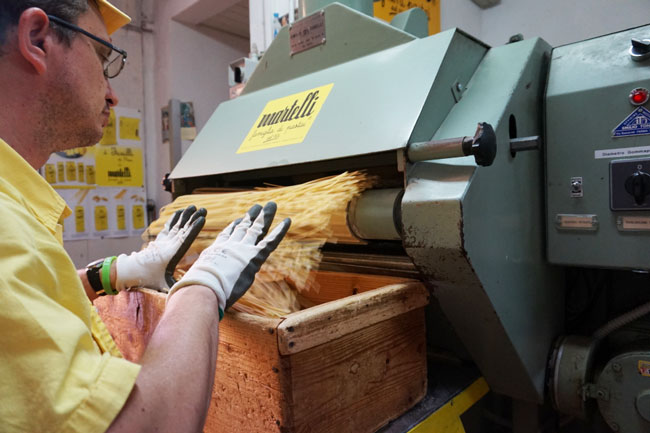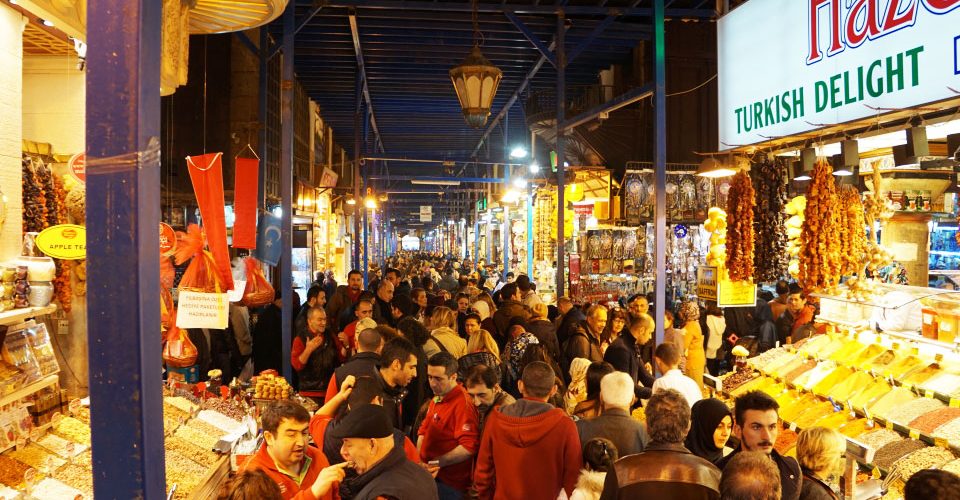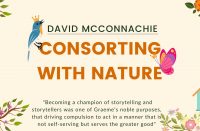In Verona, that most picturesque and fabled town, we ate horse. It was a cultural challenge, not a culinary one. The pastissada de caval was superb. As our waiter explained, horsemeat may have had its origins in tough times, but today it has everything to do with taste, not necessity. It is a regional specialty.
In Verona, that most picturesque and fabled town, we ate horse. It was a cultural challenge, not a culinary one. The pastissada de caval was superb. As our waiter explained, horsemeat may have had its origins in tough times, but today it has everything to do with taste, not necessity. It is a regional specialty.
This is not an article about who has eaten the weirdest foods; there are many stranger foods out there, I know. It’s about the link between food and culture, and how food defines our quality of life. We are what we eat, but we are also how we eat.
We are what we eat, but we are also how we eat.
Now four months into our yearlong world tour, we have travelled around France, Belgium, Italy, Greece and Turkey, and are just plunging into the culinary deep end that is India. In each country, every single meal is a snapshot of the culture of food, whether we eat at restaurants, grab street food, or shop and cook for ourselves.
It’s been a smorgasbord of images and impressions, little vignettes making up the big picture. Many are things we have tasted or experienced in Canada, but never with such vibrancy: village markets across Europe and the spice market of Istanbul; the cheeses of France, olive oil and fresh pasta in Italy, the gyros of Greece and the doners of Turkey; the lokum (Turkish delight) in Istanbul; and the rich, spicy sauces of India.

Turkish Lokum, The Real Turkish Delight \ Chris Winter
In every town we visited across Europe, there would be at least one local market a week, and if we were fortunate enough to go with a local host they would sweep us through the market to their favourite stalls, telling us why this sausage or cheese or sweet was better than the rest. The markets offer freshness and quality at good prices, so it is no surprise that people plan their meals around them.
Every market, from the smallest village to the Grand Bazaar in Istanbul, is a collection of independent vendors catering to the needs of the people. Each market is a reflection of the local culture and economy. In France, you’d be guaranteed a fine array of local artisanal cheeses and charcuterie, while in Greece and India the stalls focus more on local vegetables, fish and feta. You can learn much about a country from its local markets.
Every country and every culture we have visited has its own national cuisine, from street food to the kitchen. Cuisine takes the simplest of foods and transforms them into a celebration of life. With the same ingredients, we can eat like peasants, or dine like kings. It all depends on attitude.
There is no better example than pasta. Made from the most basic of ingredients – flour, eggs and water – it is a poor person’s staple transformed into a national love affair.
The more food [is] part of our enjoyment of life, the more care will be given to the quality of food and food systems.
In Lucca, Italy, tucked away down a little alley, we toured the Martelli family factory, makers of one of the world’s best artisanal pastas. We learned all the steps involved in making pasta by hand, and how the texture and shape of the pasta affects its ability to hold a sauce. We had to agree, it was a very tasty pasta indeed. A little side note of Canadian pride: Martelli’s uses the finest Canadian Durum Wheat flour.
If there is a lesson that has emerged from four months of eating our way around the world, it is this: enjoy food. The more food rises above being a simple necessity of life to be part of our enjoyment of life, the more care will be given to the quality of food and food systems.
We all know how local and sustainable food is intrinsically better, healthier and has a lower carbon footprint than food produced globally for mass consumption. But when we focus on the enjoyment of food, we get even further. I saw this first hand several years ago when I was working with the Live Green Toronto community animation program. We found that we got much better results by leaving our climate action mandate in the background and focusing on solutions people wanted, such as local food from community gardens.
For a national specialty, we have maple syrup. Maple syrup is our international culinary calling card. We are carrying a bag of maple candies with us on our trip as a symbol of Canada to offer people we meet a taste of Canada. Beyond maple syrup, our cultural association with food is quite weak. For street food, we have hot dogs and poutine. Our neighbourhood farmer’s markets in Toronto are mainly a luxury at the moment, but they are a step in the right direction towards reinvigorating a love of food. So how does Canada compare? Are we a country that loves our food? Do we have a national cuisine and an abundance of local markets? Or are we predominantly a nation of fast food and supermarkets?

Martelli’s Pasta: On the Production Line \ Chris Winter
Another problem is that, over the years, we Canadians have lost our connection with local food. Prince Edward Island, for example, is a tourist magnet but its small towns and local markets have lost business in favour of a quick drive to larger supermarkets. Malpeque Bay may be world renowned for its oysters yet there are no restaurants to be found in Malpeque, and just one small oyster restaurant down at the bay outside the Cabot Beach Provincial Park.
Canada is, however, rising to the challenge. PEI has an excellent promotional campaign, Local Flavours, and the Toronto area Greenbelt is promoted as a great area for recreation, tourism and local food (and food tourism). Many fantastic non-governmental organizations are also working to support healthy food both locally and nationally, including Not Far From the Tree, Field to Table, and the Land Food People Foundation (formerly Local Food Plus). You can find other examples on the Canada Conserves factsheet on Good Food.
Canadians are beginning to rediscover farmer’s markets, artisanal foods and fine cuisine. We enjoy eating local, be it the vegetables and fruit we grow in our own yards or community gardens, the fruit from pick-your-own farms, or local produce from roadside stands or farmers’ markets.
Give us time, and we will figure it out. Canadian chefs are among the world’s greatest, and they are developing the best in fine Canadian dining with an emphasis on the local terroir. Who would have known that the bountiful crop of berries from the humble Saskatoon bush in our front yard is highly prized for sauces in fancy restaurants such as Canoe in Toronto?
Over the years, we Canadians have lost our connection with local food.
If you are worried that the rest of the world are better food lovers than us, fear not. Here is Canada’s culinary edge: we embrace culinary diversity like no other country we have seen, because we are a country that embraces cultural diversity. Over the course of our journey so far, we have often joked that our trip around the world could have been accomplished at a fraction of the cost by eating our way around Toronto. That culinary diversity is partly at the root of the explosion of fine neighbourhood restaurants and cafes across the city.
Very few countries in the world offer up culinary diversity and fusion like Canada does. Try finding good sushi in Italy, or a gyro in Turkey. We Canadians do enjoy our food, and it turns out we are quite good at doing so.
Our trip around the world has been, in part, an investigation into the culture of sustainability. I believe our ability to tackle climate change and other major issues is as much dependent upon our attitudes as it is on technology and policy. We have seen that there is no better example than food. A love of food creates opportunities for innovation and support for policies to protect farmland and support local, sustainable farming.
Four months into our trip, I have a longing for Canadian Saskatoon berry and apple pie and I can’t wait to try some of the flavours and tricks we have learned on that Canadian staple, the good old backyard burger.
The former executive director of the Conservation Council of Ontario, Chris has started a new initiative to help Canada transition to a sustainable future by “living better with less,” Canada Conserves. After 30 years in the environmental movement, Chris Winter is on a well-deserved round-the-world sabbatical with his family. Along the way, Chris will be sharing examples of how other countries are dealing with climate change, resource scarcity and economic turmoil. Follow him on Twitter or Facebook. You can also follow the family’s Hello Cool World tour blog.













